Samsung Galaxy Note 20 Ultra vs Galaxy S20 Ultra: Which flagship is best?
Which of Samsung’s biggest and best smartphones belongs in your pocket?
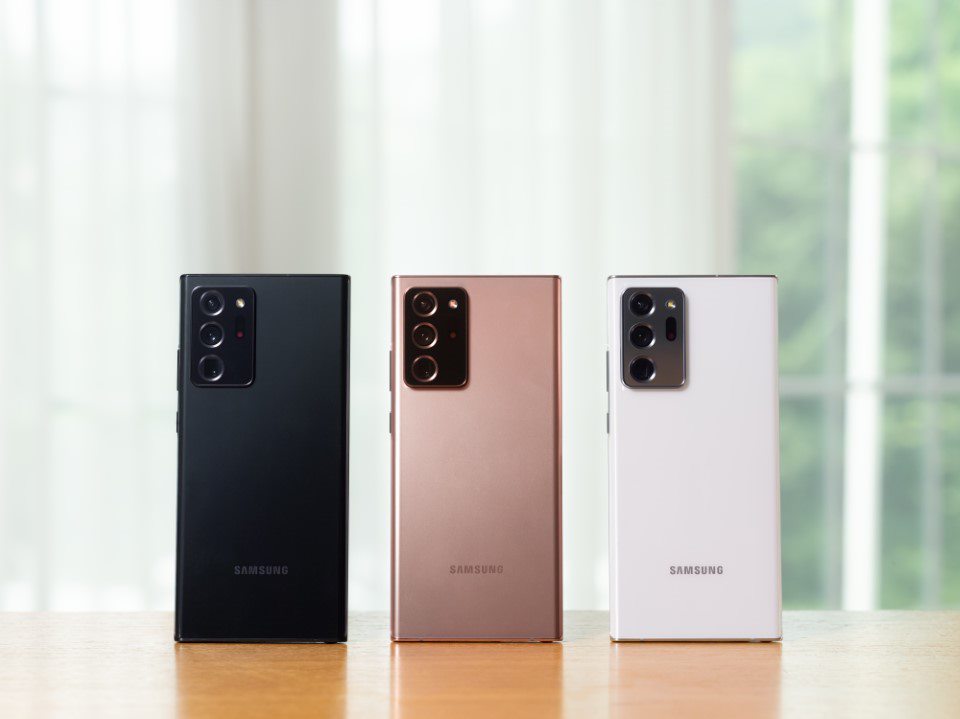
Beyond the S Pen, the larger screen size has typically been one of the defining features of the Galaxy Note line compared with the Galaxy S line from Samsung. But that changes this year as Samsung is launching two larger than life phones in the Galaxy S20 Ultra and Galaxy Note 20 Ultra.
Both smartphones also feature a massive 6.9-inch display, a 108MP main camera, 12GB of RAM and a high-end Qualcomm Snapdragon processor, so how are you supposed to decide which one is right for you?
While S Pen fans will still find this to be an easy choice, those who went with the Galaxy Note because it was the biggest and most powerful smartphone from Samsung will need to dig a little deeper for the answer this time around.
Here’s an in-depth breakdown of all the similarities and differences in the Galaxy Note 20 Ultra and Galaxy S20 Ultra to help you find which one is going to best meet your needs.
- Samsung Galaxy Tab S7 Plus review (hands-on)
- Samsung Galaxy Note 20 vs Galaxy Note 20 Ultra: Which phone should you buy?
- Galaxy Buds Live deal takes dollars off Samsung's new earbuds
Samsung Galaxy Note 20 Ultra vs. Galaxy S20 Ultra: Price
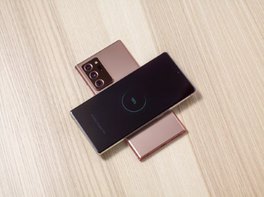
The Galaxy Note 20 Ultra starts at $1,299, while the Galaxy S20 Ultra’s retail price tops it slightly, at $1,399. However, deals are far easier to find for the older Galaxy S20 Ultra. Both smartphones include 128GB of storage at their base price with the option to upgrade to 512GB for an additional $150 on the Note 20 and $200 on the S20 Ultra, however, the latter also gets a bump from 12GB to 16GB of RAM with that upgrade.
Pre-orders for the Galaxy Note 20 Ultra made through August 20 qualify for a $150 credit usable on Samsung.com or applicable toward the Xbox Game Pass Ultimate Bundle.
Winner: Tie
Sign up to receive The Snapshot, a free special dispatch from Laptop Mag, in your inbox.
Samsung Galaxy Note 20 Ultra vs. Galaxy S20 Ultra: Specs
| Row 0 - Cell 0 | Galaxy Note 20 Ultra | Galaxy S20 Ultra |
| Display (resolution, refresh rate) | 6.9-inch AMOLED (WQHD+, 120Hz) | 6.9-inch AMOLED (WQHD+, 120Hz) |
| CPU | Qualcomm Snapdragon 865+ | Qualcomm Snapdragon 865 |
| RAM | 12GB LPDDR5 | 12GB or 16GB LPDDR5 |
| Storage | 128GB or 512GB | 128GB or 512GB |
| MicroSD slot | Yes | Yes |
| Rear cameras | 108MP f/1.8 (Wide-angle), 12MP f/3.0 (Telephoto), 12MP f/2.2 (Ultrawide) | 108MP f/1.8 (Wide-angle), 48MP f/3.5 (Telephoto), 12MP f/2.2 (Ultrawide) |
| Front camera | 10MP | 40MP |
| Battery size | 4,500 mAh | 5,000 mAh |
| Water resistance | IP68 | IP68 |
| Colors | Mystic Black, Mystic White, Mystic Bronze | Cosmic Black, Cosmic Gray, Cloud Blue, Aura Blue |
| Size | 77.2 x 164.8 x 8.1 mm | 76.0 x 166.9 x 8.8 mm |
| Weight | 208g | 220g |
Winner: Galaxy S20 Ultra
Samsung Galaxy Note 20 Ultra vs. Galaxy S20 Ultra: Performance
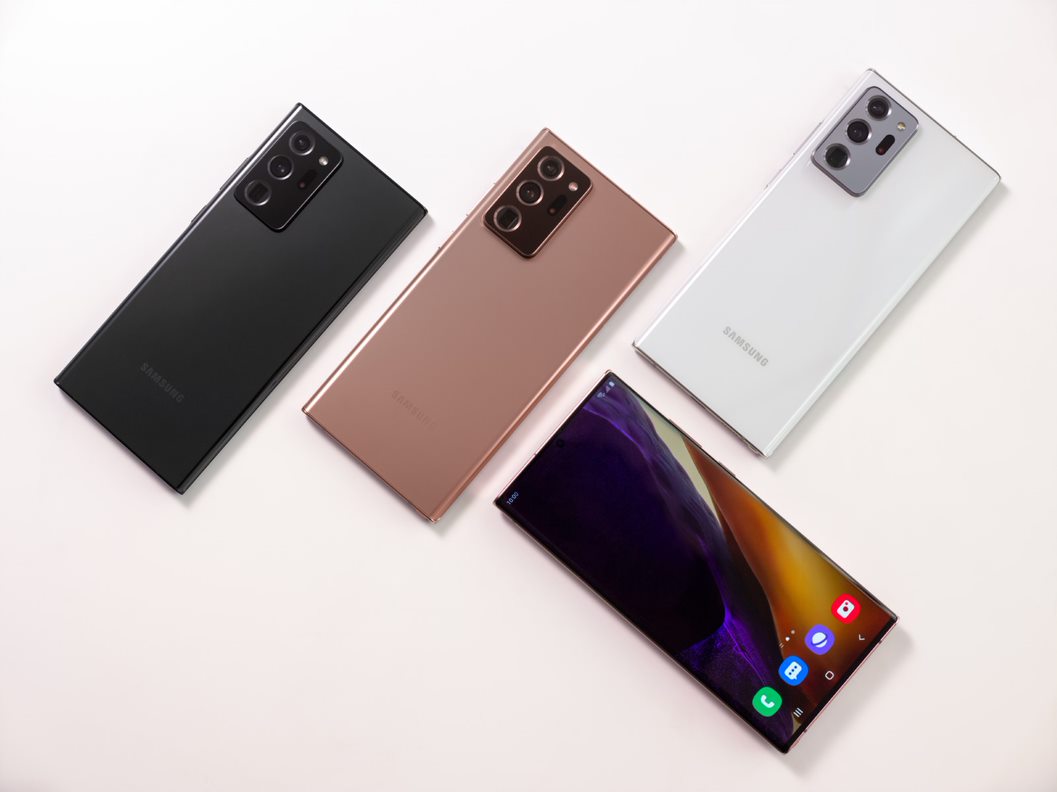
The Galaxy Note 20 Ultra has a slight advantage here thanks to its superior Qualcomm Snapdragon 865+ chipset. While the roughly 10% improvements to graphics and clock speed aren’t going to be a night and day difference compared to the Snapdragon 865 of the Galaxy S20 Ultra, they are a definite boost.
However, for those who pay up for the top Galaxy S20 Ultra and its 16GB of RAM, you will have some extra headroom over the 12GB of memory found in the Note 20 Ultra, which should result in a superior multitasking experience.
Winner: Galaxy Note 20 Ultra
Samsung Galaxy Note 20 Ultra vs. Galaxy S20 Ultra: Design

While the Note is accustomed to being the biggest Samsung phone around, it only retains that title this year when it comes to its height, at 0.04 inches taller than the Galaxy S20 Ultra, while the latter is 0.8 inches wider and 0.02 inches thicker than the Note 20 Ultra.
Naturally, the S20 Ultra comes in a bit heavier than at 7.8 ounces to the 7.3 ounces of the Note 20 Ultra. This is in part due to its larger battery and perhaps its slightly more robust array of cameras. One upside of this thickness is that it reduces the protrusion of the camera module, which is much more pronounced on the Note 20 Ultra.
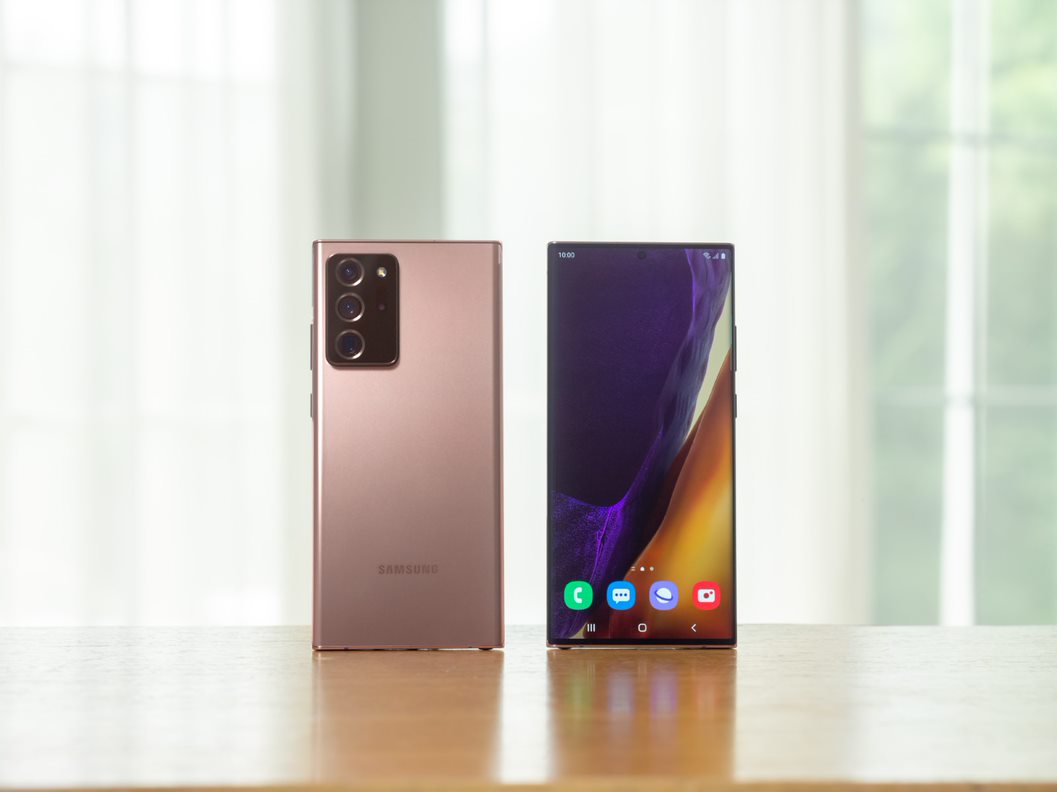
The Infinity-O displays are virtually identical, but the more rounded edges and corners of the Galaxy S20 Ultra are noticeable from the front and back as the Note 20 Ultra has retained its sharper and more abrupt edges.
Color options also vary considerably between the two smartphones with both offering a black option, but the Galaxy Note 20 Ultra introduces its signature Mystic Bronze along with white while the Galaxy S20 Ultra comes in gray and blue with the pearlescent “cloud blue” as the standout option on that device.
Winner: Tie
Samsung Galaxy Note 20 Ultra vs. Galaxy S20 Ultra: Display
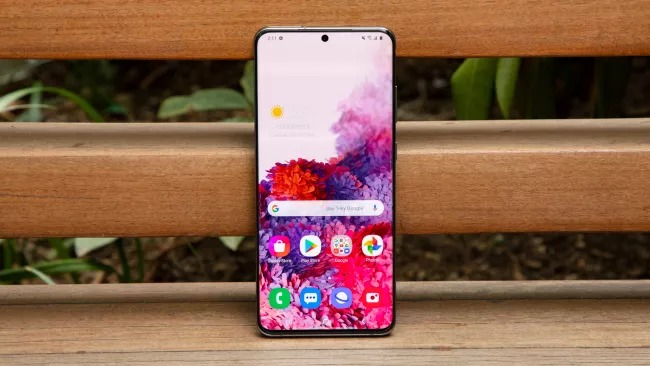
The displays on the Galaxy Note 20 Ultra and the Galaxy S20 Ultra are virtually identical, both featuring a 6.9-inch display with the Note device offering just slightly lower resolution at 3,088 x 1,440 pixels against the 3,200 x 1,440-pixels of the S20 Ultra.
It’s a negligible difference that won’t be noticeable to most users and one that will be irrelevant for those who wish to use the 120Hz refresh rate that both devices offer as that requires dropping to FHD+ resolution. One notable upgrade in this regard for the Galaxy Note 20 Ultra is the dynamic 120Hz support, which allows it to switch automatically between 60Hz and 120Hz rather than having to manually change it in settings.
Both devices feature the same Dynamic AMOLED 2X Infinity-O display technology that is 25% brighter than the previous version. In our sister site, Tom’s Guide’s review of the Galaxy S20 Ultra, it reached 662 nits of brightness and covered an astounding 231.1% of the sRGB color space. Samsung is claiming 1,500 nits of brightness for Galaxy Note 20 Ultra, but we’ll see how it fares in our testing. Both phones also offer HDR10+ support for viewing HDR content on the go.
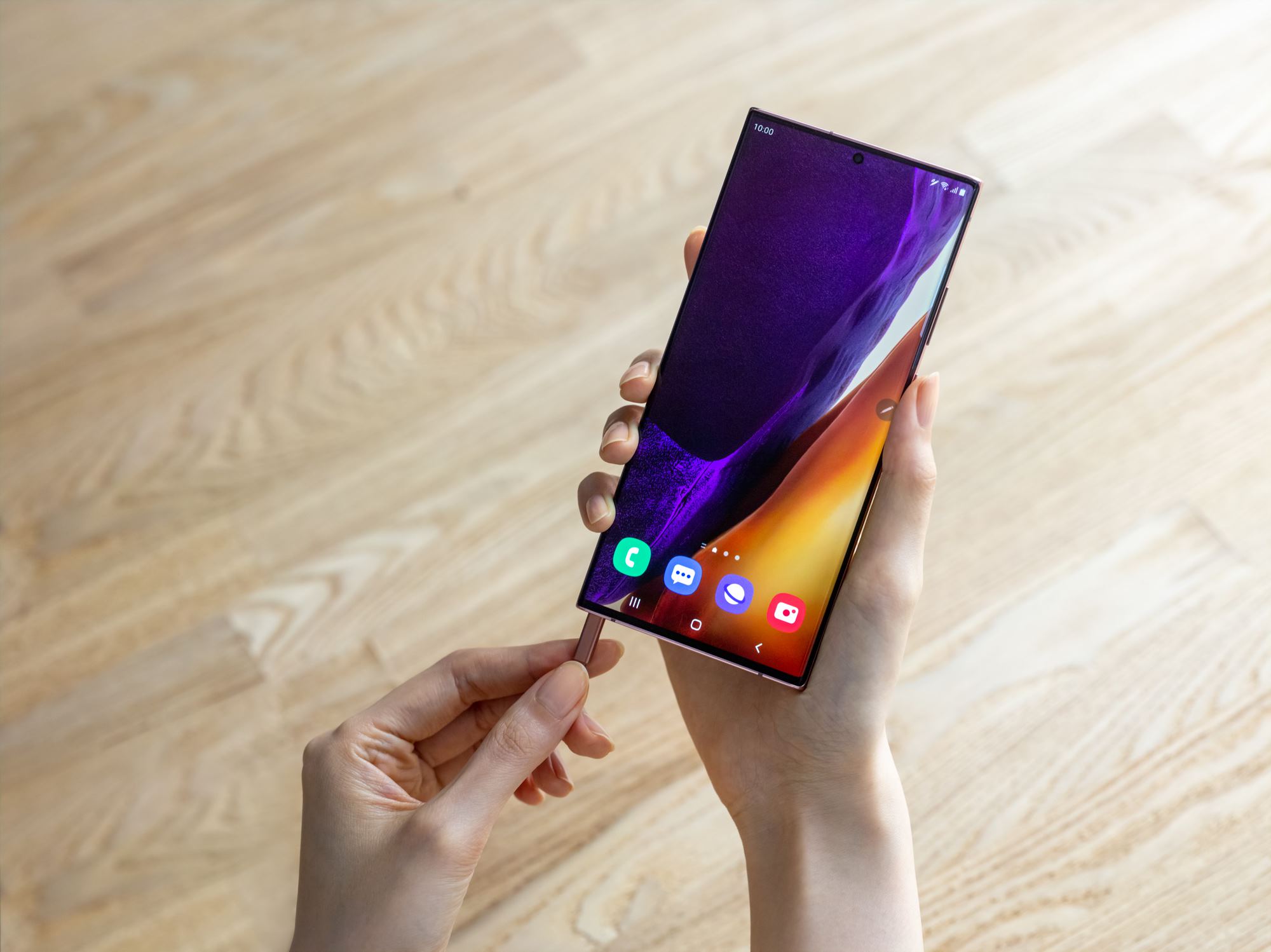
The 120Hz refresh rate on the display helps to deliver a superior touch experience, which is bolstered further by the 240Hz touch latency on both devices, making them some of the best gaming smartphones on the market.
The biggest difference between these phones is, of course, the S Pen support on the Galaxy Note 20 Ultra. The stylus has seen one massive upgrade over the previous version with latency reduced from 42ms down to 9ms. This will yield a much more natural writing or drawing experience for those who have tried the Note devices in the past and found the delay frustrating. Air Gestures, a feature that debuted with the Galaxy Note 9, allows you to perform tasks by waving the S Pen in the air. It has expanded functionality again this year, although we’ll have to see if it is more reliable than previous iterations.
Winner: Galaxy Note 20 Ultra
Samsung Galaxy Note 20 Ultra vs. Galaxy S20 Ultra: Battery Life
From a pure battery size standpoint, the Galaxy S20 Ultra comes out ahead with a 5,000 mAh battery compared to the 4,500 mAh of the Galaxy Note 20 Ultra.
While the reduced battery size on the Galaxy Note 20 Ultra is a bit concerning at first glance, the new dynamic 120Hz display support may help it to deliver comparable battery life to the Galaxy S20 Ultra. The S20 Ultra lasted 12 hours in its battery life tests using the standard 60Hz refresh rate and only 9 hours and 13 minutes when using the 120Hz refresh rate. This discrepancy should be minimized with the new display technology in the Galaxy Note 20, but we’ll have to see how it fares in our tests.
Winner: Galaxy S20 Ultra
Samsung Galaxy Note 20 Ultra vs. Galaxy S20 Ultra: Cameras

Both the Galaxy Note 20 Ultra and the Galaxy S20 Ultra feature the same 108MP wide-angle primary sensor, but there are some substantial differences with points in favor of each.
The Galaxy S20 Ultra used a hybrid optical zoom system to deliver up to 10x lossless zoom while the Galaxy Note 20 Ultra settles for 5x. The digital zoom for each mirrors this with a 100x max for the S20 Ultra and 50x max for the Note 20 Ultra. In practice, images beyond 10-20x for the S20 Ultra were too degraded to be useful, and we expect similar results from the Note 20 Ultra, but will see if this holds true in testing.
One reason for this discrepancy is the difference in the resolution of the telephoto lenses for each camera. The Galaxy Note 20 Ultra only including a 12MP telephoto sensor as compared to the 48MP of the S20 Ultra. For those who find themselves often trying to grab photos of subjects at a distance, this could make a real difference in your ability to crop in after the image is taken.
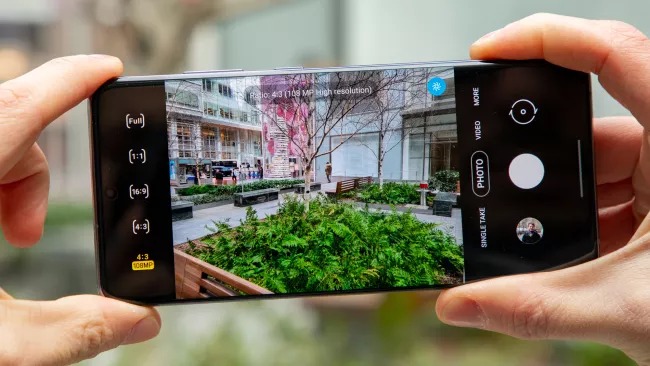
Both cameras are identical when it comes to their 12MP ultra wide-angle sensors, so when you need to capture a full scene from up close, the results should be identical.
So far, this may sound entirely in favor of the S20 Ultra, but one potentially huge addition for the Galaxy Note 20 Ultra is laser autofocus. This replaces the time-of-flight sensor on the Galaxy S20 Ultra and should deliver more accurate and near-instantaneous focusing, something that has been a source of frustration for some Galaxy S20 Ultra owners. Support for optical image stabilization is present on both, yielding better handheld photo results and smoother video.
Video is another area that is a dead heat between these two smartphones with up to 8K video capture along with up to 120fps slow-motion recording at full HD. Samsung’s updated camera software aimed at prosumer and professional videographers will be on each, adding features such as 21:9 aspect ratio, 24fps recording, exposure and zoom speed controls and improved audio controls for gain and source selection for external audio capture with devices like the new Galaxy Buds Live.
Winner: Galaxy S20 Ultra
Overall winner: Samsung Galaxy S20 Ultra
| Row 0 - Cell 0 | Galaxy Note 20 Ultra | Galaxy S20 Ultra |
| Pricing (10) | 7 | 7 |
| Specs (10) | 8 | 9 |
| Performance (15) | 14 | 13 |
| Design (10) | 8 | 8 |
| Audio (10) | 8 | 8 |
| Display (15) | 14 | 13 |
| Battery life (15) | 12 | 13 |
| Cameras (15) | 13 | 14 |
| Total | 84 | 85 |
From a pure specs standpoint, the Galaxy S20 Ultra is the winner here, but the Galaxy Note 20 Ultra does enjoy the processor advantage and it is going to take some additional testing to verify whether the spec differences result in better real-world experiences between the two devices.
The new dynamic 120Hz display along with the laser autofocus in the Galaxy Note 20 Ultra are both seemingly small updates that could yield a big difference in areas that were weaknesses for the Galaxy S20 Ultra.
The S Pen is, of course, a massive differentiator for some users, but for Note users who opt for the device due to screen size and battery life, the Galaxy S20 Ultra is now equal on both counts, and with the deals available on the older smartphone, it is going to cost you less.
Sean Riley has been covering tech professionally for over a decade now. Most of that time was as a freelancer covering varied topics including phones, wearables, tablets, smart home devices, laptops, AR, VR, mobile payments, fintech, and more. Sean is the resident mobile expert at Laptop Mag, specializing in phones and wearables, you'll find plenty of news, reviews, how-to, and opinion pieces on these subjects from him here. But Laptop Mag has also proven a perfect fit for that broad range of interests with reviews and news on the latest laptops, VR games, and computer accessories along with coverage on everything from NFTs to cybersecurity and more.

